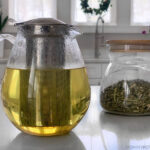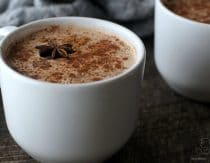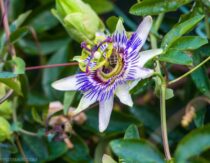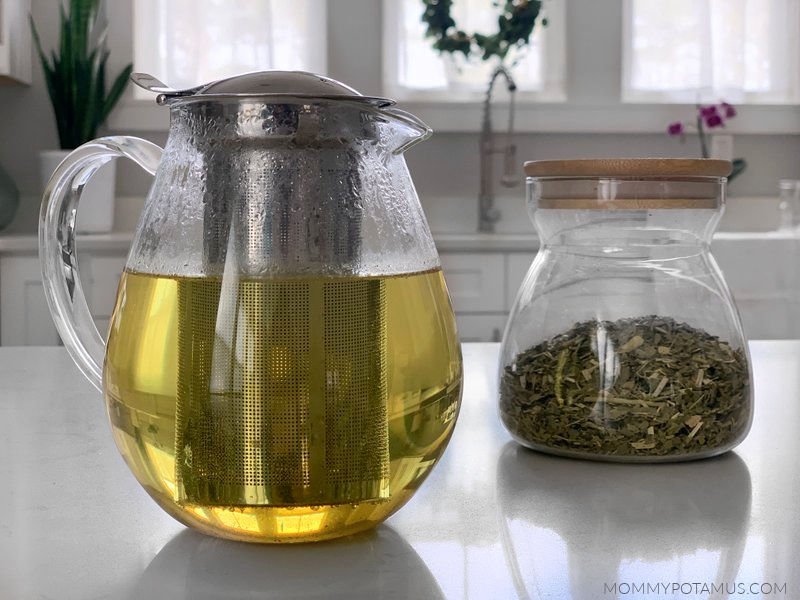
Today we’re going to dive into using passionflower tea, so if you get flushed or embarrassed easily, now is the time to click away. Kidding, kidding! Although its name has led many to believe that it’s an aphrodisiac, passionflower (Passiflora incarnata) doesn’t refer to romantic passion. The name was coined by 16th century travelers who thought that different parts of the flower symbolized the passion of the Christ.
Traditionally used by the Houma, Cherokee and other Native American tribes as a sedative (1), this gorgeous climbing vine is considered helpful for people who desire:
- better sleep
- stress support
- a mood lift
- help shutting off “worry mode”
Herbalists David Winston and Steven Maimes describe it as useful for:
“The person [who] can’t shut off his mind at night, and . . . lays in bed thinking about the day, yesterday, tomorrow, last month, next month, what if this, and if only that. I have had patients tell me it’s like having a talk radio station in their heads and they can’t find the off switch. Passionflower is the off switch.” (2)
We’ll dive into my easy recipe for passionflower tea soon, but first I want to mention that – as always – none of these statements have been evaluated by the FDA, this article is not medical advice, and it is not meant to diagnose or treat any condition. If you have a question about whether this herb (or any other) is right for you, please talk with a qualified healthcare provider. Okay, let’s dive in!
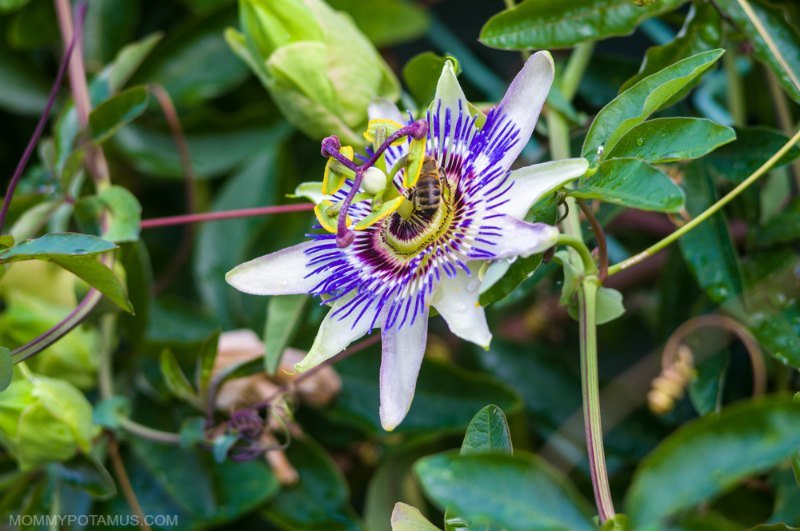
What makes passionflower so relaxing?
According to Penn State Medical Center, “Scientists believe passionflower works by increasing levels of a chemical called gamma aminobutyric acid (GABA) in the brain.” Clinical herbalists say there are actually a variety of constituents that contribute to passionflower’s therapeutic properties, but GABA is definitely the most well-known.
If you’re not familiar with it, GABA is a neurotransmitter that relaxes the central nervous system. It’s associated with a positive mood, a sense of well-being, restful sleep, and calm focus. Although it’s most often sipped before bed to encourage restful sleep, some research suggests that it may be also helpful during the day to calm hyper children. (3) Some adults also consume it during the day – often along with adaptogenic herbs – to increase resilience to stress.
Herbs That Blend Well With Passionflower
Although the benefits of passionflower can be enjoyed by simply brewing it in water, this herb can also be blended with other nervines (herbs that relax the nervous system) to create a synergistic effect. Some of the most common herbs used alongside passionflower are:
Chamomile– “Drinking a cup of chamomile tea is like getting a warm hug from a loved one. It can help you relax and unwind after a stressful day, decrease pain caused by muscle tension or spasms, and strongly reduce inflammation. Chamomile’s best gifts are that it is gentle while simultaneously offering profound relief.” (Rosalee de la Foret, Alchemy of Herbs)
Lemon Balm – Gentle yet potent, lemon balm is perfect for use with kids and adults for a mood lift, relaxation, sleep, first aid, and more. (Click here to read more about the benefits and uses of lemon balm)
Valerian Root – This flowering herb has long been used to support emotional well-being, relaxation and deep sleep. It’s name comes from the Latin valere, which translates as “to be well” or “to be strong.” One thing to be aware of when blending passionflower with valerian root is that roots need to more coaxing to release their beneficial compounds. See the notes section of the recipe for instructions on blending these two together. (Click here to learn more about the benefits of valerian root)
Other herbs to consider: St. John’s Wort, Hops, Lavender, Rose
Does passionflower tea have any side effects?
According to the Botanical Safety Handbook: 2nd Edition, its a Safety Class 1A herb, which is the safest rating possible. Traditionally it has been used for people of all ages – in fact, Native Americans used to give babies a tea made from the roots to aid in weaning. (1)
However, the National Center for Complementary and Integrative Health says that it should be avoided by pregnant women due to the possibility that it may stimulate contractions. Herbalists David Winston and Steven Maimes also note that “Passionflower may increase the effects of prescription sedatives, antispasmodics, and anxiolytics; use them together with caution. Do not use passionflower with older type antidepressants called monoamine oxidase inhibitors (MAOIs). (2)

Passionflower Tea Recipe
Ingredients
- 1-2 tsp dried passionflower
- 1 cup water
- 1 tsp additional herb from the above list (optional – if you're using valerian root see the notes section for additional instructions)
Instructions
- Place 1-2 teaspoons dried herb in a cup. Pour 8 ounces of boiling water over the herb, cover the cup with a small plate or lid, and allow the infusion to steep for 20-30 minutes. Strain out the herbs and drink 4 oz. up to four times per day. (12)
Notes
Nutrition
What’s your favorite way to make passionflower tea?
Please tell me in the comments below!
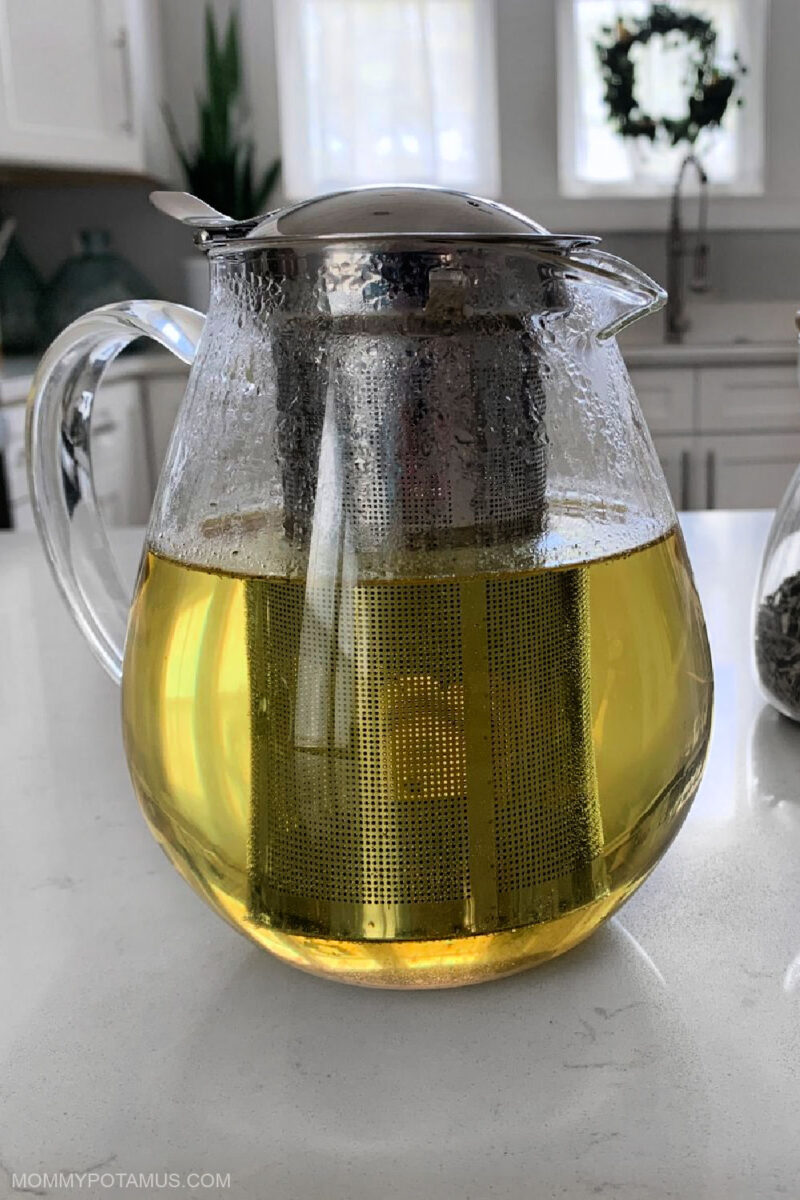
Want more research-backed natural remedies?
No problem, I’ve created a free ebook for you – Kitchen Apothecary: 25+ Natural Remedies Using Ingredients From Your Pantry – as a gift for signing up for my newsletter. You’ll also get updates when I post about safe essential oils for pregnant/breastfeeding mamas, exclusive gifts and coupons (I was able to give away a jar of free coconut oil to anyone who wanted it recently!), plus other goodies.
Sign up using the form below.
Sources
1. United States Department of Agriculture National Resources Conservation Service. Purple Passionflower (Passiflora Incarnata L.)
2. Winston, David (2019) Adaptogens, Herb for Strength, Stamina and Stress Relief
3. Shahin Akhondzadeh et. al. (2005) Passiflora incarnata in the treatment of attention-deficit hyperactivity disorder in children and adolescents

